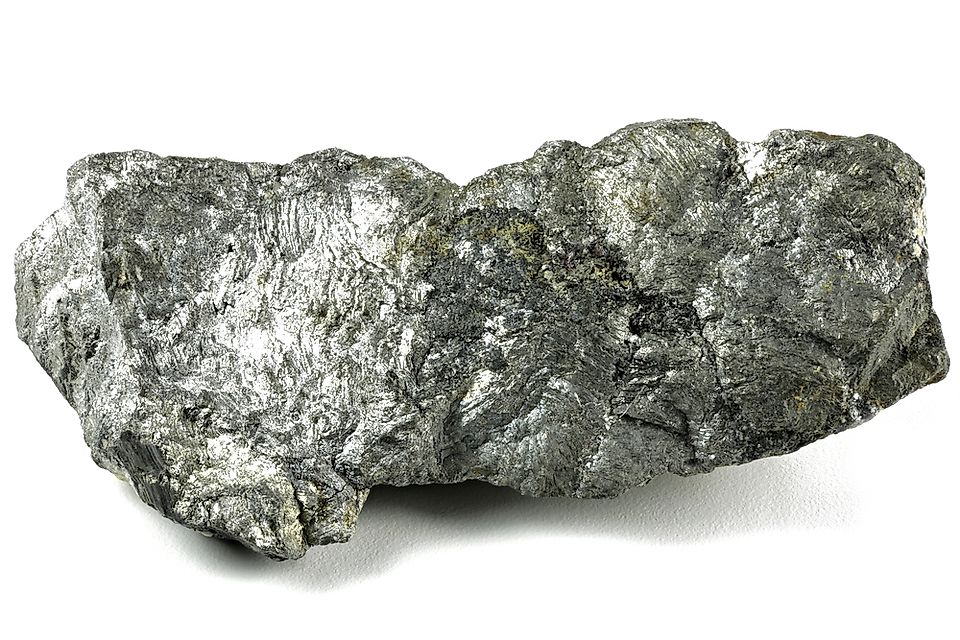- Our antimony smelter and precious metals plant is located in the Burns Mining District of Sanders County, Montana, approximately 15 miles west of Thompson Falls, MT. We hold 2 patented mill sites where the plant is located. We have no 'proven reserves' or 'probable reserves' of antimony, as these terms are defined by the Securities and Exchange Commission. Environmental restrictions preclude mining at this site.
- Mining was suspended in December 1983, because antimony could be purchased more economically from foreign sources.
- In our existing operations in Montana, we produce antimony oxide, sodium antimonate, antimony metal, and precious metals. Antimony oxide is a fine, white powder that is used primarily in conjunction with a halogen to form a synergistic flame retardant system for plastics, rubber, fiberglass, textile goods, paints, coatings and paper. Antimony oxide is also used as a color fastener in paint, as a catalyst for production of polyester resins for fibers and film, as a catalyst for production of polyethylene pthalate in plastic bottles, as a phosphorescent agent in fluorescent light bulbs, and as an opacifier for porcelains. Sodium antimonate is primarily used as a fining agent (degasser) for glass in cathode ray tubes and as a flame retardant. We also sell antimony metal for use in bearings, storage batteries and ordnance.
- We believe we are competitive both domestically and world-wide due to the following:
- We have a reputation for quality products delivered on a timely basis.
- We have two of the three operating antimony smelters in North and Central America.
- We are the major domestic producer of antimony products.
- We can ship on short notice to domestic customers.
- We are vertically integrated, with raw materials from our own mines, mills, and smelter in Mexico, along with the raw materials from exclusive supply agreements we have with numerous ore and raw material suppliers.
- As a vertically integrated company, we will have more control over our raw material costs.
Zeolite We own 100% of Bear River Zeolite Company, (BRZ an Idaho corporation) that was incorporated on June 1, 2000. B We have no 'proven reserves' or 'probable reserves' of zeolite, as these terms are defined by the Securities and Exchange Commission. 'Zeolite' refers to a group of industrial minerals that consist of hydrated aluminosilicates that hold cations such as calcium, sodium, ammonium, various heavy metals, and potassium in their crystal lattice. Water is loosely held in cavities in the lattice. BRZ zeolite is regarded as one of the best zeolites in the world due to its high CEC of approximately 180-220 meq/100 gr., its hardness and high clinoptilolite content, its absence of clay minerals, and its low sodium content. BRZ's zeolite deposits’ characteristics which make the mineral useful for a variety of purposes including: Soil Amendment and Fertilizer. Zeolite has been successfully used to fertilize golf courses, sports fields, parks and common areas, and high value agricultural crops Water Filtration. Zeolite is used for particulate, heavy metal and ammonium removal in swimming pools, municipal water systems, fisheries, fish farms, and aquariums. Sewage Treatment. Zeolite is used in sewage treatment plants to remove nitrogen and as a carrier for microorganisms. Nuclear Waste and Other Environmental Cleanup. Zeolite has shown a strong ability to selectively remove strontium, cesium, radium, uranium, and various other radioactive isotopes from solution. Zeolite can also be used for the cleanup of soluble metals such as mercury, chromium, copper, lead, zinc, arsenic, molybdenum, nickel, cobalt, antimony, calcium, silver and uranium. Odor Control. A major cause of odor around cattle, hog, and poultry feed lots is the generation of the ammonium in urea and manure. The ability of zeolite to absorb ammonium prevents the formation of ammonia gas, which disperses the odor. Gas Separation. Zeolite has been used for some time to separate gases, to re-oxygenate downstream water from sewage plants, smelters, pulp and paper plants, and fish ponds and tanks, and to remove carbon dioxide, sulfur dioxide and hydrogen sulfide from methane generators as organic waste, sanitary landfills, municipal sewage systems, animal waste treatment facilities, and is excellent in pressure swing apparatuses. Animal Nutrition. According to other research, feeding up to 2% zeolite increases growth rates, decreases conversion rates, and prevents scours. BRZ does not make these claims. Miscellaneous Uses. Other uses include catalysts, petroleum refining, concrete, solar energy and heat exchange, desiccants, pellet binding, horse and kitty litter, floor cleaner and carriers for insecticides, pesticides and herbicides.
Precious Metals (Gold and Silver) USAC has reported progress on the gold and silver leach plant in Guanajuato, Mexico for the Los Juarez property. The shakedown of the cyanide plant at Puerto Blanco has progressed as expected, and we look forward to becoming a gold and silver mining company.
|





